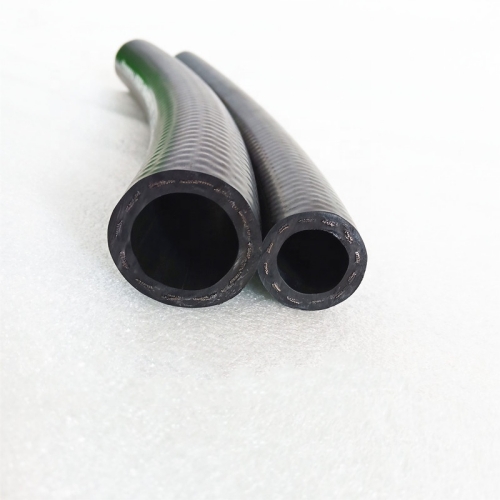335345435
Nov . 05, 2024 01:57 Back to list
hydraulic hose banjo fittings
Understanding Hydraulic Hose Banjo Fittings
Hydraulic systems are integral in various industries, from agricultural machinery to automotive applications. One essential component of these systems is the hydraulic hose banjo fitting. This article delves into the important aspects of hydraulic hose banjo fittings, including their design, functionality, applications, and maintenance.
What are Hydraulic Hose Banjo Fittings?
Hydraulic hose banjo fittings are specialized connectors that are designed to deliver hydraulic fluid from hoses to various hydraulic components while allowing for a secure and leak-proof connection. The name banjo comes from the fitting’s shape, which resembles a musical instrument. Typically, they consist of a hollow body with a horizontal, cylindrical opening that allows hydraulic fluid to pass through while being clamped to a pipe or hose end.
These fittings come in various sizes and configurations, enabling them to fit a wide range of hydraulic systems. They are usually made from durable materials such as steel or aluminum to withstand high pressures and harsh environments.
Design and Functionality
The design of hydraulic hose banjo fittings involves several key features. First, the fitting includes a flange that allows it to be bolted securely to another component, such as a cylinder head or valve. This bolted connection is crucial as it prevents leaks that can lead to hydraulic failure.
Moreover, the banjo fitting typically has a passageway or hole through the center, facilitating smooth and unrestricted fluid flow. This design minimizes turbulence and reduces pressure drops, enhancing the overall efficiency of the hydraulic system.
The installation of hydraulic hose banjo fittings is relatively straightforward. The fitting is placed over the outlet or inlet of a hydraulic component, and a bolt is driven through the fitting into the component’s threaded hole. When properly tightened, this creates a robust connection that can handle the demands of high-pressure hydraulic applications.
Applications of Hydraulic Hose Banjo Fittings
Hydraulic hose banjo fittings are widely used across several industries due to their versatility. Some common applications include
1. Automotive Industry In vehicles, banjo fittings are commonly used in brake systems, fuel delivery systems, and hydraulic steering systems. Their leak-proof nature is particularly vital in these applications, where any fluid loss can lead to failure.
hydraulic hose banjo fittings

2. Construction and Heavy Machinery In excavators, bulldozers, and other heavy equipment, hydraulic hose banjo fittings are used to connect hoses to hydraulic cylinders, pumps, and motors. These fittings help maintain the high-pressure environment required for efficient operation.
3. Agricultural Equipment Tractors and various farm implements use hydraulic systems to assist with lifting and steering. Banjo fittings play a crucial role in ensuring these operations run smoothly without leaks.
4. Aerospace In aircraft, hydraulic systems control flight surfaces, landing gear, and other critical functions. Banjo fittings here must meet stringent safety standards and ensure reliable performance in demanding conditions.
Maintenance Tips
Maintaining hydraulic hose banjo fittings is essential for the longevity of hydraulic systems. Here are some tips to ensure optimal performance
1. Regular Inspections Regularly check banjo fittings for signs of wear, corrosion, or leaks. Early detection can prevent hydraulic failures and costly repairs.
2. Proper Torque Ensure that fittings are tightened to the manufacturer’s specified torque. Over-tightening can damage the fitting or the components it connects to, while under-tightening can lead to leaks.
3. Compatibility Check Always ensure that the materials of the banjo fitting are compatible with the fluids being used in the system to avoid corrosion.
4. Replace Worn Parts If a banjo fitting or associated components show signs of damage, replace them immediately to prevent system failure.
Conclusion
Hydraulic hose banjo fittings are essential components in various hydraulic systems, providing reliable connections that facilitate the safe transfer of hydraulic fluids. Understanding their design, applications, and maintenance can help operators ensure that their hydraulic systems remain efficient and effective. Regular maintenance and inspections are crucial in preventing leaks and ensuring the longevity of hydraulic systems in which these fittings are employed. Whether in automotive, construction, agriculture, or aerospace, the importance of hydraulic hose banjo fittings cannot be overstated.
-
SAE 100 R17 Black Smooth Cover Hydraulic Hose
NewsMar.07,2025
-
SAE 100 R17 Black Smooth Cover Hydraulic Hose
NewsMar.07,2025
-
SAE 100 R17 Black Smooth Cover Hydraulic Hose
NewsMar.07,2025
-
SAE 100 R17 Black Smooth Cover Hydraulic Hose
NewsMar.07,2025
-
SAE 100 R17 Black Smooth Cover Hydraulic Hose
NewsMar.07,2025
-
steel wire braided hydraulic hose
NewsMar.07,2025



